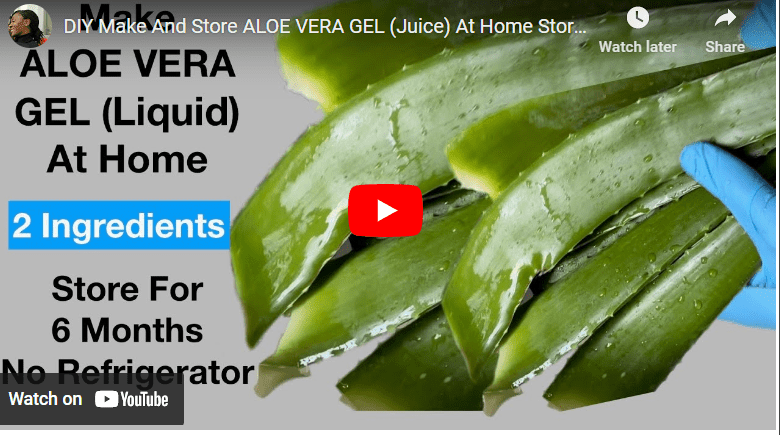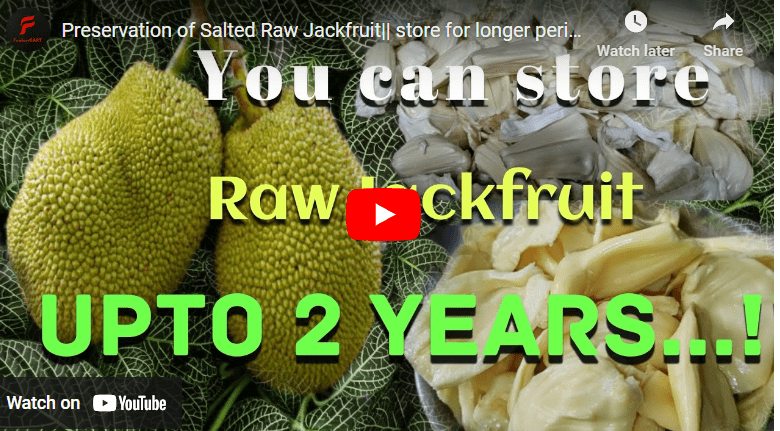Pig farming is a lucrative agricultural venture in Nigeria, and providing the right nutrition to your pigs is crucial for their health, growth, and productivity.
Formulating your pig feed can save you money and ensure that your pigs receive a well-balanced diet. However, formulating pig feed can be a daunting task, especially if you’re new to pig farming.
This article will guide you step by step on how to formulate pig feed in Nigeria. You’ll learn the ingredients to use, how to calculate the nutrient requirements of your pigs, and how to blend and mix the ingredients to create a well-balanced pig feed.
How To Formulate Pig Feed In Nigeria
Formulating pig feeds can be tasking if you don’t know where to start. It is quite easy and all you need do is to acquire the necessary ingredients to begin with.
Further processes have been discussed below from beginning to end to ensure that you successfully formulate your pig feed and never run out of supply.
So, follow the step-by-step instruction on how to formulate pig feed discussed below.
Read Also: How To Formulate Pig Feed In Kenya
Step 1: Determine The Nutrient Requirements For The Pigs
The first step in formulating pig feed is to determine the nutrient requirements for the pigs. This will vary depending on the age and weight of the pigs, as well as their intended use (e.g., breeding, fattening, etc.).
You can consult with a veterinarian or a livestock nutritionist to determine the specific nutrient requirements for your pigs.
Read Also: How To Formulate Pig Feed In Ghana
Step 2: Select The Ingredients For The Feed
Once you have determined the nutrient requirements for your pigs, you can select the ingredients for the feed. Common ingredients for pig feed in Nigeria include:
- Maize: 50%
- Soybean meal: 20%
- Groundnut cake: 10%
- Cassava peels: 10%
- Wheat bran: 5%
- Palm kernel cake: 5%
Read Also: How To Formulate Fish Feed In the US
Step 3: Calculate The Quantities Of Each Ingredient
After selecting the ingredients, you need to calculate the quantities of each ingredient to include in the feed. You can use software programs or consult with a livestock nutritionist to help you with this process.
Step 4: Prepare The Ingredients
Once you have determined the quantities of each ingredient, you can begin to prepare them. This may involve grinding, milling, or crushing certain ingredients to make them easier to mix.
Read Also: How To Formulate Fish Feed In UK
Step 5: Mix The Ingredients
After preparing the ingredients, you can mix them together. You can use a feed mixer to ensure that the ingredients are evenly distributed throughout the feed.
Here is how to mix the ingredients for your pig feed formulation.
Step 1 – Make Sure That All The Ingredients Are Clean And Dry.
It’s essential to ensure that all the ingredients you use for your pig feed formulation are clean and dry. Any moisture or dirt in the ingredients can cause the feed to spoil faster, which can lead to health issues for your pigs.
Read Also: How to Formulate Pig Feed in South Africa
To ensure that your ingredients are clean, you can sift or screen them to remove any impurities, such as stones or dirt.
Also, ensure that the storage containers for the ingredients are clean and dry before use.
Read Also: How To Formulate Fish Feed in Nigeria
Step 2 – Weigh Out The Quantities Of Each Ingredient
Accurate measurement of the ingredients is crucial for the success of your pig feed formulation.
The quantity of each ingredient you need to use will depend on the nutrient requirements of your pigs, as well as the formulation you have calculated.
It’s crucial to use a digital or mechanical scale to ensure that you measure the correct quantities of each ingredient accurately.
You can refer to the feed formulation table or use software programs to calculate the amount of each ingredient required.
Read Also: [Beginners Guide] How To Formulate Fish Feed in Uganda
Step 3 – Pour The Maize Into The Feed Mixer.
After weighing out the correct quantity of maize, pour it into the feed mixer. Ensure that you start with the maize because it’s the primary ingredient in pig feed.
Then, start the mixer and let it run for a few minutes to ensure that the maize is well distributed. Running the mixer for a few minutes before adding other ingredients helps to distribute the maize evenly and prevent it from clumping together.
Also, allowing the mixer to run before adding other ingredients helps to create an even mixture that contains all the required nutrients for your pigs.
Read Also: [Beginners Guide] How To Formulate Fish Feed In Ghana
Step 4 – Add The Remaining Ingredients
soybean meal, groundnut cake, cassava peels, wheat bran, and palm kernel cake to the mixer. You can add them all at once or in batches if your mixer is not large enough.
Let the mixer run for at least 10-15 minutes to ensure that all the ingredients are well mixed. You may need to run it longer if the mixer is not powerful or if the ingredients are not evenly distributed.
Step 5 – Check The Consistency Of The Feed
If it’s too dry, you can add a small amount of water to the mixer and let it run for a few more minutes. If it’s too wet, you can add a dry ingredient like maize or wheat bran to absorb some of the moisture.
Read Also: [Beginners Guide] How To Formulate Fish Feed In South Africa
Step 6 – Transfer the Feed into a Container
Once the feed is well mixed and has the desired consistency, turn off the mixer and transfer the feed to a clean, dry storage container.
Ensure that you label the container with the date and the name of the feed, as well as any other relevant information such as the nutrient composition or the age and weight of the pigs it’s intended for.
Step 6: Store The Feed
Once you have mixed the ingredients, you can store the feed in a cool, dry place. It’s important to keep the feed free from moisture and pests to prevent spoilage.
Read Also: [Beginners Guide] How To Formulate Feed For Snail
Benefits Of Formulating Pig Feeds
- Cost-effective: Formulating pig feeds can be more cost-effective than buying pre-formulated feeds because you can use locally available ingredients and adjust the feed composition to meet the specific needs of your pigs.
- Nutrient control: When formulating pig feeds, you have more control over the nutrient content, which allows you to tailor the feed to your pigs’ specific needs, depending on their age, weight, and stage of growth.
- Improved pig performance: Formulated pig feeds provide all the necessary nutrients required for pig growth and development, leading to improved pig performance in terms of weight gain, meat quality, and reproductive performance.
- Reduced risk of disease: Formulating pig feeds with the right balance of nutrients helps to boost pig immunity, reducing the risk of diseases and improving overall herd health.
- Increased profitability: By formulating pig feeds, farmers can optimize their feed costs while improving pig performance, resulting in increased profitability.
Read Also: [Beginners Guide] How To Formulate Feed For Snail South Africa
Challenges Of Formulating Pig Feeds
- Nutrient variation: The nutrient content of some ingredients can vary, leading to variations in the nutrient content of the final feed. This can make it challenging to formulate a consistent and well-balanced feed.
- Equipment cost: Formulating pig feeds requires specialized equipment, which can be expensive to acquire and maintain.
- Feed storage: Proper storage of pig feeds can be challenging, as feed can spoil if exposed to moisture or pests.
- Technical knowledge: Formulating pig feeds requires technical knowledge of animal nutrition and feed formulation. Farmers who lack this knowledge may struggle to create a balanced and nutritious feed.
- Time-consuming: Formulating pig feeds can be a time-consuming process, especially for small-scale farmers who may not have the resources to invest in specialized equipment or professional expertise.
Read Also: [Beginners Guide] How To Formulate Feed For Snail In the US
Disadvantages Of Formulating Pig Feeds
- Quality control: Farmers who formulate their pig feeds need to ensure they maintain quality control to ensure the feed meets the nutritional requirements of their pigs. Failure to do so can lead to poor pig performance and increased health risks.
- Lack of expertise: Formulating pig feeds requires specialized knowledge of animal nutrition and feed formulation. Farmers who lack this expertise may not be able to formulate a balanced and nutritious feed, leading to poor pig performance.
- Inconsistent nutrient composition: The nutrient composition of formulated pig feeds may vary from batch to batch, leading to inconsistent pig performance.
- Risk of contamination: Formulating pig feeds requires proper sanitation and hygiene practices to prevent contamination by pathogens or toxins.
- Time-consuming: Formulating pig feeds can be a time-consuming process, requiring careful measurement and mixing of ingredients.
Read Also: [Beginners Guide] How To Formulate Feed For Snail In Ghana
Equipment Needed To Formulate Pig Feeds
- Digital or mechanical scale for weighing ingredients accurately.
- Feed mixer for blending and mixing ingredients.
- Storage containers for storing feed.
- Sifter or screen for removing impurities from ingredients.
- Sample bags for storing ingredient samples for laboratory analysis.
Best Practices To Formulate Pig Feeds
- Use high-quality, locally available ingredients.
- Ensure that all ingredients are clean and dry before mixing.
- Use digital or mechanical scales for accurate measurement of ingredients.
- Ensure that feed mixing equipment is cleaned and sanitized before and after use.
- Label and store feeds correctly to prevent spoilage and contamination.
Read Also: [Beginners Guide] How To Formulate Poultry Feed In Kenya
Where To Sell Pig Feeds In Nigeria
- Local feed stores and agro-input dealers.
- Agricultural cooperatives and associations.
- Pig farmers’ associations and cooperatives.
- Online marketplaces, such as Jiji and Konga.
- Direct marketing to individual pig farmers.
Read Also: [Beginners Guide] How To Formulate Feed For Snail In Nigeria
Best Pig Feed Formula
The best pig feed formula will vary depending on the age, weight, and stage of growth of your pigs. A balanced pig feed should contain protein, carbohydrates, fats, fiber, vitamins, and minerals in the correct proportions.
Common ingredients used in pig feed formulation include maize, soybean meal, cassava, fishmeal, wheat bran, and palm kernel cake.
Consult with a qualified animal nutritionist or use online pig feed formulation calculators to create a well-balanced pig feed.
Read Also: [Beginners Guide] How To Formulate Feed For Snail In Ghana
Fast Growing Pig Feed
A fast-growing pig feed should contain a high level of protein, amino acids, and energy to support rapid growth.
In addition to the common ingredients used in pig feed formulation, you can add protein supplements such as dried whey, blood meal, or feather meal to boost the protein content.
It is essential to ensure that the feed is well-balanced and meets the nutritional requirements of your pigs to avoid health problems.
Pig Feed Formulation PDF
Pig feed formulation PDFs are educational materials that provide information on how to formulate balanced pig feed.
These PDFs contain information on the nutrient requirements of pigs, common ingredients used in pig feed formulation, and step-by-step instructions on how to calculate the nutrient content of a feed recipe.
Pig feed formulation PDFs are available online and can be downloaded for free or for a fee.
Pig Feed Formulation in Nigeria PDF
Pig feed formulation in Nigeria PDFs provides information on how to formulate pig feeds using locally available ingredients.
These PDFs are tailored to the Nigerian environment and contain information on locally sourced ingredients such as cassava, yam, and plantain.
Pig feed formulation in Nigeria PDFs is available online and can be downloaded for free or for a fee.
How to Feed Pigs Cheaply in Nigeria
To feed pigs cheaply in Nigeria, you can use locally available ingredients such as cassava, yam, and plantain to supplement the pig feed.
You can also use by-products from food processing such as wheat bran, maize bran, and brewers’ grains to lower the cost of pig feed.
It is essential to ensure that the feed is well-balanced and meets the nutritional requirements of your pigs to avoid health problems.
Pig Feed Formulation Nairaland
Nairaland is a popular Nigerian forum that covers a wide range of topics, including agriculture. Pig feed formulation Nairaland is a discussion thread where farmers share ideas and information on pig feed formulation.
The thread provides a platform for farmers to ask questions, share experiences, and learn from each other about the best practices of pig feed formulation.
How to Feed Pigs Cheaply
To feed pigs cheaply, you can use locally available ingredients such as cassava, sweet potato, and banana peels. You can also use by-products from food processing such as brewers’ grains and wheat bran to supplement the pig feed.
It is essential to ensure that the feed is well-balanced and meets the nutritional requirements of your pigs to avoid health problems. Farmers can consult with animal nutritionists or use online pig feed formulation calculators to create a well-balanced pig feed.
Conclusion
Formulating your pig feed in Nigeria can save you money and ensure that your pigs receive a well-balanced diet. By following the step-by-step guide provided in this article, you’ll be able to create a nutritious pig feed that meets the nutrient requirements of your pigs, leading to healthier and more productive animals.




